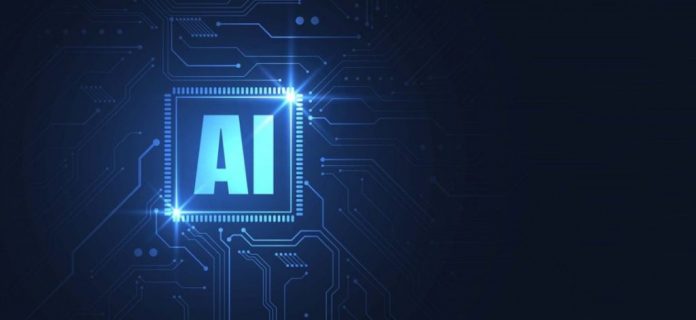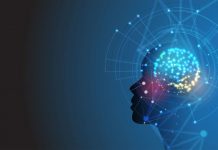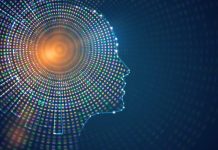This article has been written by Shivam Sharma and has been edited by Shashwat Kaushik.
This article has been published by Sneha Mahawar.
Table of Contents
Introduction
In recent times, safeguarding intellectual property rights has undergone significant transformation. Despite nations’ attempts to expeditiously take measures to align with IP-related issues and matters raised by the WIPO and WTO, experts in this domain opine that recent scientific progressions in the intellectual property sphere appear to outpace existing scholarly literature in the field of intellectual property. This indicates a pressing need for more comprehensive research in the IP domain and its regulation to keep pace with these advancements.
One such area that has come to the forefront is machine learning, more commonly known as Artificial Intelligence (AI). AI is “the ability of a computer or a robot controlled by a computer to do tasks usually done by humans because they require human intelligence and discernment. Although there are no AIs that can perform the wide variety of tasks an ordinary human can do, some AIs can match humans in specific tasks.”
The Director General of WIPO held three sessions (from when to when) discussing the impact of AI on IP rights. The issues surrounding the involvement of governments in matters pertaining to artificial intelligence that were then contemplated included, inter alia, the formulation of policies and strategies to bolster the development of AI as well as regulatory initiatives. A panel of experts held a discourse on the complexities surrounding the attribution of inventorship, authorship, and ownership of works and inventions that were either generated or assisted by AI.
This article talks about the IP rights protection of AI-generated and AI-assisted works in the light of Copyright, Patents, and Trademarks.
Artificial intelligence and Copyright Law
The chief considerations while granting copyright protection to any work are those related to authorship, ownership, and whether the work can be deemed to be an original creation. In the case of AI generated or AI assisted works, it is difficult to attribute authorship or ownership to an individual that has created the work with the help of AI. Should the credit behind the creation go to the programmers or developers that created the AI system, or the company (if any) that used the AI system and employed individuals to come up with a creation using the AI technology, or the end-user itself that generated something out of his own creative thinking but only after using the AI tool developed by a programmer. In the US, works created using AI tools are refused protection as they do not fulfil the “human authorship requirement.” Such works are, therefore, released into the public domain. In most countries, the requirement of having a human author is of vital importance. In general, the subject matter of copyright is works borne out of an intellectual mind that, upon acquiring certain skills, employing certain labour, create something so unique that it is extremely difficult to call it a replication of an existing work (the originality requirement). Under US law, in the case of end users of AI, if a work has been created by them using AI, after acknowledging the use of such an AI tool in the work, IP rights can be claimed over that work.
The US “made for hire” solution
It has been suggested that the “made for hire” doctrine envisaged under the US Copyright Act of 1976 tends to resolve the issue related to authorship/ownership of works created using AI The doctrine attributes authorship to the employer for works created by employees under a made-for-hire agreement. It has been suggested that to encompass the present conundrum of authorship of AI-created works, the definition of the words “employer” and “employee” under the statute could be redefined, where employer may include an AI programmer or a body corporate that owns the AI device, while “employee” may include an AI program/device since it works upon instructions/commands from the employer. This, however, does not deal with situations where the AI is solely responsible for creating a work with absolutely no human intervention. The problem arises when an application for copyright registration is filed in the name of the AI itself. In 2018-19, DABUS, aka “Device for Autonomous Bootstrapping of Unified Sentience”, filed for copyright registration before the US Copyright Office (USCO), with the AI tool as the author of the autonomously created work. The USCO rejected the application stating that the work lacks the human authorship necessary to support a copyright claim, and in 2022, the Copyright Review Board reaffirmed the decision stating that copyright protection cannot be extended to non-human creations under the current regime and that the doctrine (work for hire) requires binding legal contracts, which the AI cannot enter into. The Board stated that “A work made for hire must be either (A) prepared by an employee or (B) by one or more parties who expressly agree in a written instrument” that the work is for-hire. In both cases, the work is created as the result of a binding legal contract—an employment agreement or a work-for-hire agreement.”
Similarly, the UK Copyright, Designs and Patents Act of 1988 states under Section 9(3) that, “In the case of a literary, dramatic, musical or artistic work which is computer-generated, the author shall be taken to be the person by whom the arrangements necessary for the creation of the work are undertaken.” Therefore, copyright protection for AI-generated works under this Section might face the same fate as the DABUS case before the USCO and Review Board in the US.
The situation in cases where there is a human co-author might be different. For example, in Canada, in a copyright registration application, the names of both the AI painting App “RAGHAV” and the human co-author Ankit Sahni were mentioned. The Canadian Intellectual Property Office (CIPO) registered the copyright since listing the human co-author bypassed the human authorship requirement.
The Indian challenge
In the Indian scenario, Section 2(d)(vi) of the Copyright Act of 1957 says that an author in relation to an artistic work that is computer-generated means the person who causes the work to be created. A work solely generated by AI, as in the DABUS case, again goes out of the purview of this definition. Furthermore, Section 17(c), in some consonance with the foreign, ‘made for hire’ doctrine, makes an author, working in employment under a contract of service or apprenticeship, the first owner of the copyright therein in the absence of an agreement to the contrary. The Delhi High Court in ‘Neetu Singh vs. Rajiv Saumitra and Ors.’, was of the opinion that the Defendants (the employer therein) had to establish by means of any terms and conditions that the literary work was also a part of the duties and obligations of the plaintiff (employee therein) in her capacity as an employee, in the absence of which the copyright cannot go to the employer. Simply put, a conjoint reading of this rule and Section 2(d)(vi) shows that if an employer causes, authorises, or commands the creation of a work, he can be said to be an author as per the Act. Therefore, for AI-assisted or AI generated works created by or with assistance from a ‘human co-author’, copyright protection should exist. The problem still lies with works created solely by an AI where the AI itself claims protection. This would be particularly difficult to achieve as many courts have ruled since times immemorial that IP rights exist only for humans as (i) usually, they can only employ their intellect, labour, and skills into a creation (or invention) out of volition or free will, and (ii) the author “…is the person who translates an idea into a fixed, tangible expression entitled to copyright protection. Such criteria cannot be met in a work created solely by AI, as the question of translating its own idea into a tangible expression out of free will, does not arise.
Patents and artificial intelligence
Patent laws generally offer the same questions to be answered as copyright laws, i.e., is an AI Invention patentable under the current patent laws, and who can be credited with the inventorship? The above-mentioned case of DABUS went to the US Patent Office too, seeking Patent rights over the inventions created by DABUS. Here, DABUS was mentioned as the sole inventor, even though the computer scientist behind DABUS, Stephen Thaler, filed documentation assigning him all the rights to DABUS as an inventor. The United States Patent and Trademark Office (USPTO), however, denied all the claims owing to the “human inventorship” requirement. The matter was contested before the Court of Eastern District of Virginia and later appealed before the Court of Appeals for the Federal Circuit, but the decision of the USPTO was upheld each time, noting that inventors must be human beings. Thaler even argued for a wider and more inclusive definition of the words “individual” and “whoever” appearing in the US Patent Act to include “AI software” and “corporations and other non-human entities”, respectively. However, the court maintained that “In the Patent Act, individuals—and, thus, inventors—are unambiguously natural persons.”
Possible solutions
As in the copyright cases, by making changes to certain definitions or using an inclusive interpretation for terms such as “inventors”, “individuals”, “inventions”, etc., the present problem of AI as an inventor cannot be solved. Different stakeholders have tried to come up with different possible ways in which this can be achieved.
To bypass the “human-inventor” requirement by modifying the Patent Act so that an AI can be named as a co-inventor(s). However, in such a scenario, the AI would not be able to fulfil the accountability standards in cases of litigation, compliance, or giving consent and declarations. In such cases, the US Court of Appeals for the Second Circuit has held that a person claiming to be the author of a joint work must prove that both parties intended each other to be joint authors. How can an AI give consent or a declaration to be a joint author (or joint-inventor for that matter)? That would be the big question.
Secondly, the “made for hire” doctrine in copyright laws should be made applicable to “made for hire” inventions as a possible solution where Corporations/Institutions owning or setting up an AI system shall apply as inventors. Though, in the absence of a human, at least copyright claims under this doctrine have been rejected by US Courts where AI was the sole author, even when seeking refuge under the “made for hire” doctrine, as seen in the review board’s decision in the DABUS’ copyright registration application.
Artificial intelligence and trademarks
AI has affected Trademarks in quite a different way than it has with copyright and patent laws. Here, the problem is not with getting a Trademark registered for AI systems but with how such a system has affected business entities adversely. The entire foundation of Trademark laws centres around the fact that consumers have choices, and such choices can be influenced or manipulated. Laws related to such influences in trade slowly developed to prevent unfair trade practices and promote fair competition between different players. Now that AI technologies are emerging, this whole system needs upgrading. Take, for example, the famous case of Cosmetics Warriors Ltd. & Anor vs. Amazon.co.uk Ltd. and Anor (2014). In this case, the claimants (who claimed infringement) called Lush owned the trademark called ‘Lush,’ while Amazon made bids to Google on AdWords keywords that included ‘lush’. Therefore, when a consumer searched the word lush, Amazon’s sponsored links would appear, taking the user to products named lush but not the products of the claimants. As a result, claimant ‘Lush’ brought infringement proceedings against Amazon. The court ruled in the claimants’ favour since Amazon showed products titled ‘lush’ from third parties but did not show the claimants’ products even though they had the mark ‘lush’ registered. This case is just a small, almost decade-old example of how AI can be used to manipulate consumers to the disadvantage of businesses. Now the situation can only be presumed to have worsened in the absence of regulations and laws delineating responsibilities and liabilities in cases where AI applications recommend trademark infringing goods or where the AI application leads a consumer to buy counterfeit goods or is led to a particular product or service through manipulation of algorithms.
Conclusion
In the case of copyright and patents, suffice it to say that changes in certain existing definitions under these statutes may help curb the issues to some extent. A wider and more inclusive interpretation of existing terminology, such as including the term ‘mechanical persons’ as opposed to using only natural persons where AI-assisted or AI-generated work can fit in, may be a possible solution. In the case of trademarks, proper authorities need to regulate the use of AI systems by means of regulations, prohibitions, bylaws, etc. and also state who shall be held liable where the AI systems mislead consumers to infringing or counterfeit goods and where business entities are indulging in unfair trade practices.
References
- https://networkreadinessindex.org/the-future-of-intellectual-property-in-the-era-of-ai/#:~:text=Protecting%20AI%20with%20IP%3A%20Just,in%20AI%20research%20and%20development.
- https://www.wipo.int/about-ip/en/artificial_intelligence/policy.html
- https://papers.ssrn.com/sol3/papers.cfm?abstract_id=4203360
- https://indiaai.gov.in/ai-standards/ai-and-intellectual-property-rights
- https://hbr.org/2023/04/generative-ai-has-an-intellectual-property-problem
Students of Lawsikho courses regularly produce writing assignments and work on practical exercises as a part of their coursework and develop themselves in real-life practical skills.
LawSikho has created a telegram group for exchanging legal knowledge, referrals, and various opportunities. You can click on this link and join:
Follow us on Instagram and subscribe to our YouTube channel for more amazing legal content.














